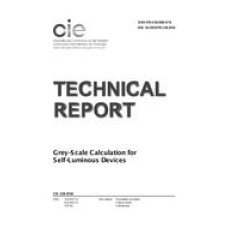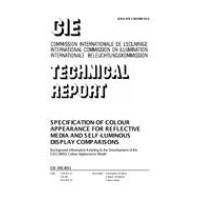Contemporary colour media, to which a self-luminous grey (or more generally, neutral) scale would apply, include light emitting diode (LED) displays and liquid crystal displays (LCD). Every colour-difference calculation has a neutral or achromatic component. In stand-alone mode, this neutral scale can be used to calculate barely-visible threshold changes in luminance, equal-appearing suprathreshold steps of grey scale, matching grey appearance or conspicuousness of grey targets during visual search. CIE lightness, L*, as part of the CIELAB and CIELUV colour spaces, was developed to serve similar purposes for reflective materials, and it was adapted in 1983 for use with cathode-ray tube (CRT) displays. Self-luminous devices such as computer displays, wide-area luminaires (when used not for lighting but for artistic or information purposes), advertising media, signage, safety lights, scientific and medical displays, avionics and heads-up displays, often exhibit high luminance, high spatial resolution and high contrast that require a self-luminous neutral scale. A self-luminous neutral scale does not require specification of a reference white; instead it is a function of the background luminance of the visual target, thus the scale has no upper limit. Because the self-luminous neutral scale can involve high contrast over a small visual subtense, it accounts for intraocular scattering. Finally, a self-luminous neutral scale enables the calculation of colour differences (e.g. CIELAB, CIEDE2000, or OSA-UCS) between self-luminous image segments, including consideration of a neutral point. This report recommends a method to calculate a self-luminous neutral scale fulfilling these requirements. The report also refers to applications, for which the recommended calculation could be improved:
- for mesopic light levels (e.g. cinema and video);
- to calculate effects of any particular visual subtense and shape of contrasts;
- to reflect the effects of stimulus geometry (e.g. comparison of adjoining fields versus separated fields);
- to incorporate post-retinal effects (e.g. due to visual cortical computations, such as the white point), and highlights in the surround not adjoining the visual target.
 PDF
PDF
All of our standards document are available in PDF (Portable Document Format), an electronic, downloadable format.You will be able to download the file in your account downloads.
 Multi-User Access
Multi-User Access
After purchasing, you have the ability to assign each license to a specific user.
 Printable
Printable
At any time, you are permitted to make printed copies for your and your members' reference use.
 PDF
PDF
 Multi-User Access
Multi-User Access
 Printable
Printable





